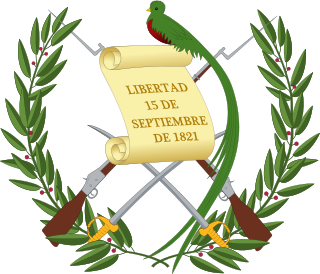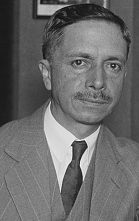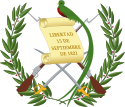
General elections were held in Guatemala on 6 March 1966. After no candidate received 50% or more of the national vote, Julio César Méndez Montenegro was elected President by Congress on 10 May. On the Congressional elections, the Revolutionary Party won 28 of the 54 seats. Voter turnout was 56.27% in the presidential election and 55.01% in the Congressional elections

Constituent Assembly elections were held alongside a plebiscite on the presidency of Carlos Castillo Armas in Guatemala on 10 October 1954. A reported 99.92% of voters voted in favour of Armas' presidency, whilst the National Anti-Communist Front won 57 of the 65 seats in the Assembly.

Parliamentary elections were held in Guatemala for half the seats in Congress between 16 and 18 January 1953. The Revolutionary Action Party won a plurality of seats.

Parliamentary elections were held in Guatemala for half the seats in Congress on 16 December 1950. The Revolutionary Action Party won a plurality of seats.

Parliamentary elections were held in Guatemala between 26 and 28 November 1948 in order to elect half the seats in Congress. The National Renovation Party-Revolutionary Action Party alliance won the most seats, but the Popular Liberation Front remained the largest party.

Parliamentary elections were held in Guatemala between 24 and 26 January 1947 in order to elect half the seats in Congress. The Revolutionary Action Party won a plurality of seats.
Legislative elections were held in Guatemala to elect members of the Congress on 3–5 November 1944.
A presidential election was held in Guatemala on 17–19 December 1944. The October Revolution of 1944 had overthrown Jorge Ubico, the U.S. backed dictator of Guatemala. A junta composed of Francisco Javier Arana, Jacobo Árbenz and Jorge Toriello took power, and quickly announced presidential elections, as well as elections for a constituent assembly. The subsequent elections took place in December 1944, and were broadly considered free and fair, although only literate men were given the vote. Unlike in similar historical situations, none of the junta members stood for election. The front-runner was the philosophically conservative University professor Juan José Arévalo, of the Renovación Nacional. Arévalo's closest challenger was Adrián Recinos, whose campaign included a number of individuals identified with the Ubico regime. The ballots were tallied on 19 December 1944, and Arévalo won in a landslide, receiving more than four times as many ballots as the other candidates combined.

Presidential elections were held in Guatemala between 17 and 19 December 1944. The result was a victory for Juan José Arévalo, who received 86.25% of the vote.

A referendum on the presidential term of Jorge Ubico was held in Guatemala on 25 May 1935. If approved, it would allow Ubico to override the constitutional limitation on serving two consecutive terms in office. It was reportedly approved by 99.85% of voters.

General elections were held in Guatemala on 5 December 1926. The presidential election resulted in a victory for Lázaro Chacón González, who received 88.6% of the vote. Whilst the elections were rigged, the Progressive Liberal Party did manage to win some seats in the Congress.
United Front of Political Parties and Civic Associations was a political electoral front in Guatemala. The principal partners in the front were the National Democratic Front (FND), Popular Liberation Front (FPL), Central Democratic Party (PDC), Social Democratic Party (PSD), National Renovation Party (PRN) and the National Vanguard Party (PVN). The Front was formed on October 19, 1944. It disbanded after the Legislative elections of 1944.

The National Democratic Reconciliation Party was a moderate conservative party in Guatemala.

Presidential elections were held in Guatemala during seven days in September 1898. Prior to the elections Manuel Estrada Cabrera had established the first real political party in the country's history by admitting people from outside the influential liberals to the Liberal Party.

Presidential elections were held in Guatemala in July 1904. The result was a victory for Manuel Estrada Cabrera, who received all but three of the national votes. He assumed the presidency on 15 March 1905.

Presidential elections were held in Guatemala on 11 April 1910. Manuel Estrada Cabrera was re-elected unopposed. He assumed the presidency on 15 March 1911.

Presidential elections were held in Guatemala on 17 January 1916. For the second successive election, Manuel Estrada Cabrera was re-elected unopposed. Despite there only being one candidate, voters were rounded up by the military and taken to polling stations, where they could only vote for Cabrera. Cabrera assumed the presidency on 15 March 1911.

Presidential elections were held in Guatemala in November 1873. Justo Rufino Barrios wins the presidency.

Presidential elections were held in Guatemala in November 1880.

Presidential elections were held in Guatemala in January 1892. The result was a victory for José María Reina Barrios.












